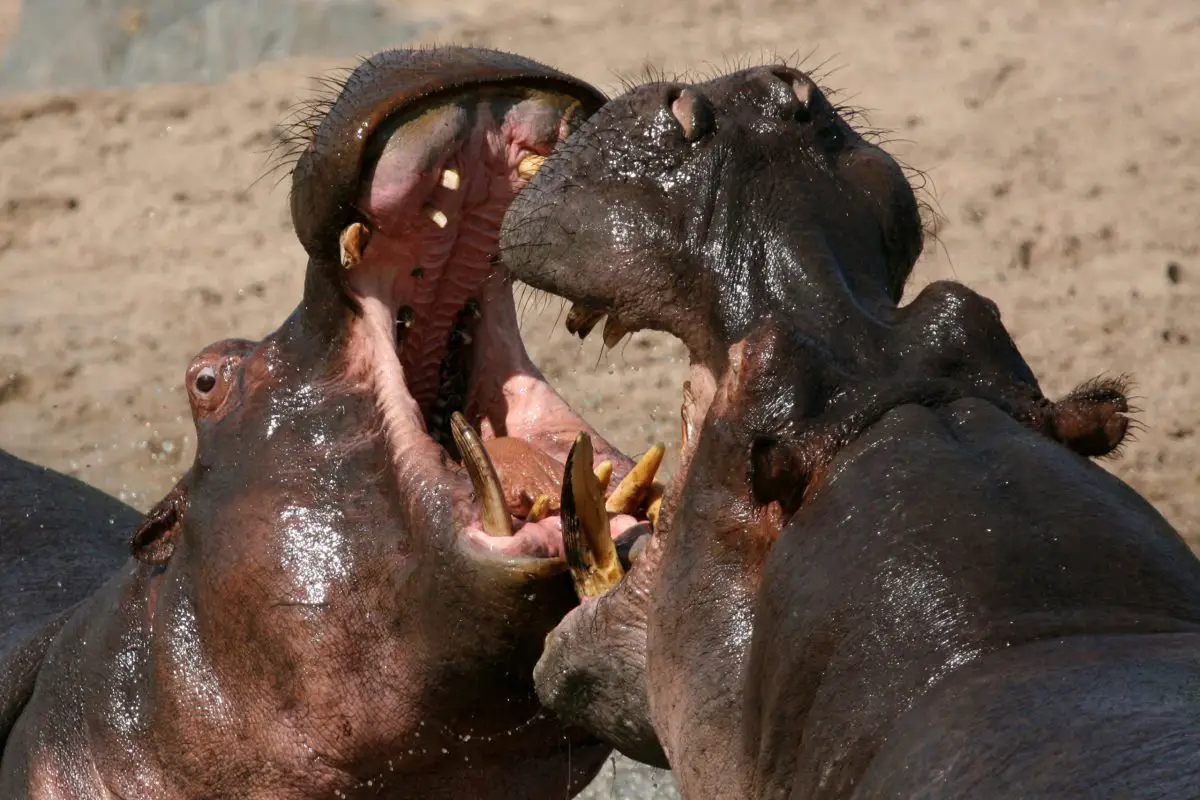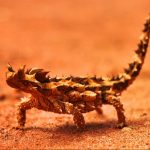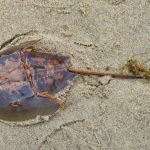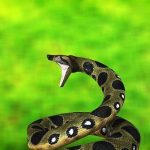What are fangs?
An animal’s fang is a modified tooth that is designed to tear or grab flesh. When it comes to hunting and dominance, several species in the animal world have developed their fangs into deadly weapons.
Fangs are found in most carnivorous animals and reptiles, including snakes and lizards. The fangs of herbivores have evolved through time to become simple canines, with some species even losing them entirely.
Hippopotamus – Hippo
| Scientific Name | Hippopotamus amphibius |
| Type of Animal | Mammal |
| Diet | Herbivore |
| Fang Size | 16 inches |
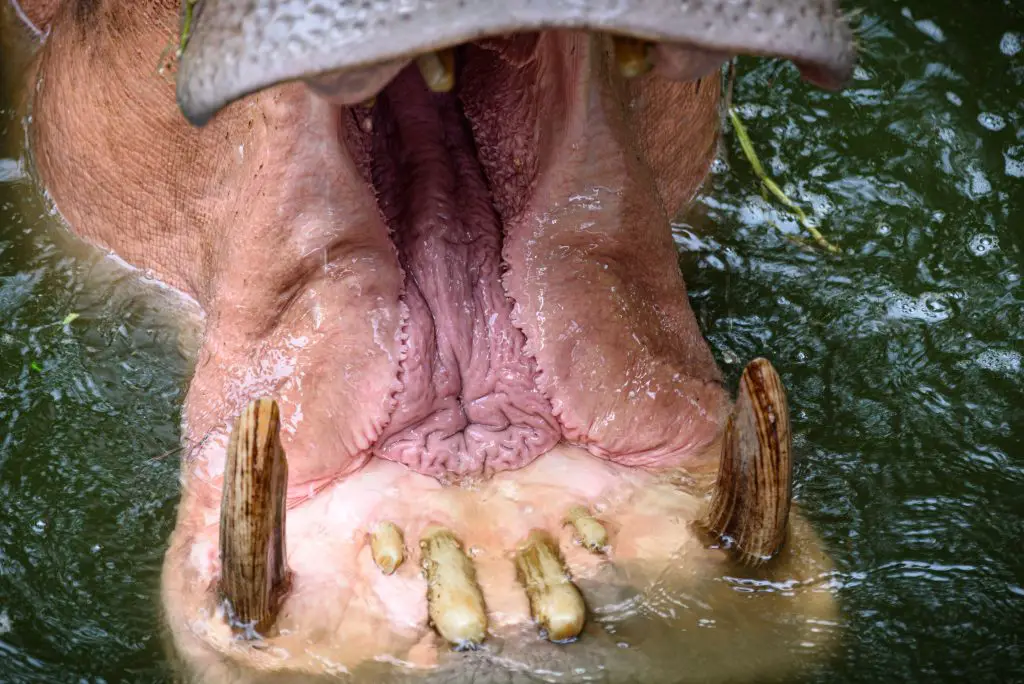
The Hippopotamus is the third-largest terrestrial mammal possessing fangs. They are found in the northern Congo, South Africa, Tanzania, Kenya, Gambia, Sudan, and Uganda.
They have huge teeth that are generally termed tusks. However, its long teeth in the lower jaw are also referred to as “fangs.” However, some people also view its large teeth, which are 16 inches in length, as fangs that are positioned in its lower jaw.
Its strong fangs, together with other long teeth or tusks, are engaged in fighting violently, notably during territorial conflict, guarding their newborn hippos, and also against prospective dangers and predators. These gigantic beasts have the biggest fangs of any terrestrial mammal in the world.
Baboon
| Scientific Name | Papio anubis |
| Type of Animal | Mammal |
| Diet | Omnivore |
| Fang Size | 2 inches |
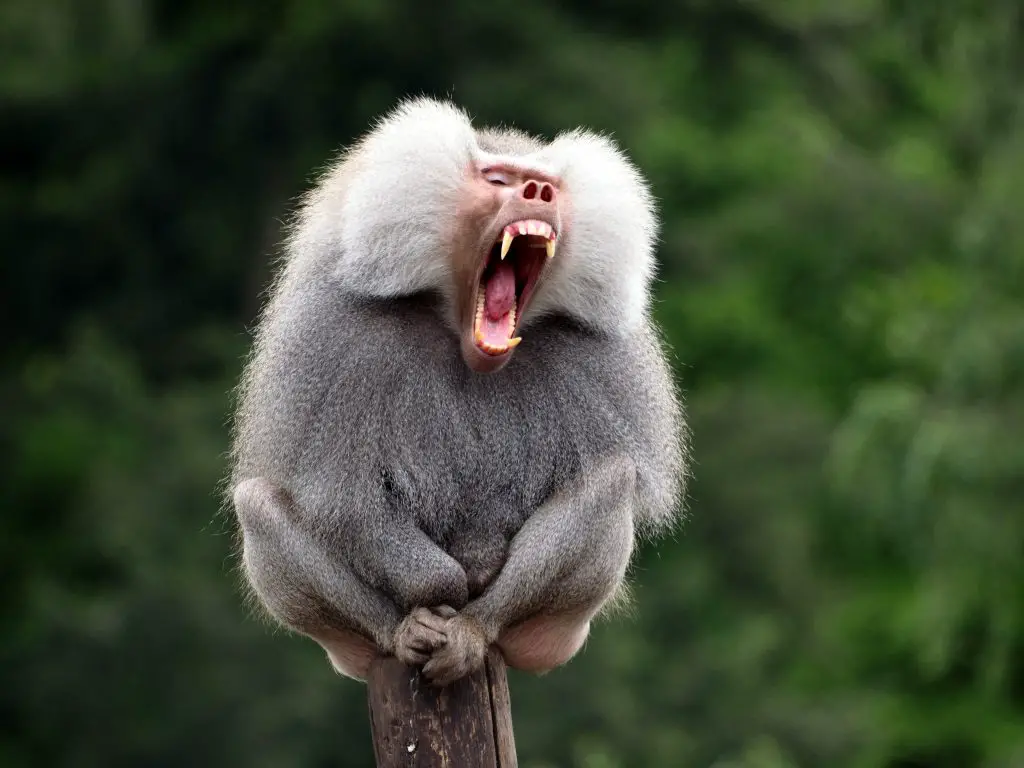
A baboon is a kind of Old World monkey that may be found in Africa, Arabia, and other parts of the world.
Although the fangs of the baboon are used for hunting small prey, they also play a vital role in fighting and defending their territory.
The leader of the group is usually the baboon with the most teeth. Pulling their lips and gums back, they expose their terrifyingly large fangs when they feel threatened.
A lion’s teeth are better suited to catching small prey like lambs, rodents, birds, and even antelope. Aside from the fact that they’re better hunters, guys with huge fangs seem to be more attractive to other females.
Long-fanged baboon leaders often show off these traits as a sign of their power.
King Cobra
| Scientific Name | Ophiophagus hannah |
| Type of Animal | Reptile |
| Diet | Carnivore |
| Fang Size | 0.5 inches |
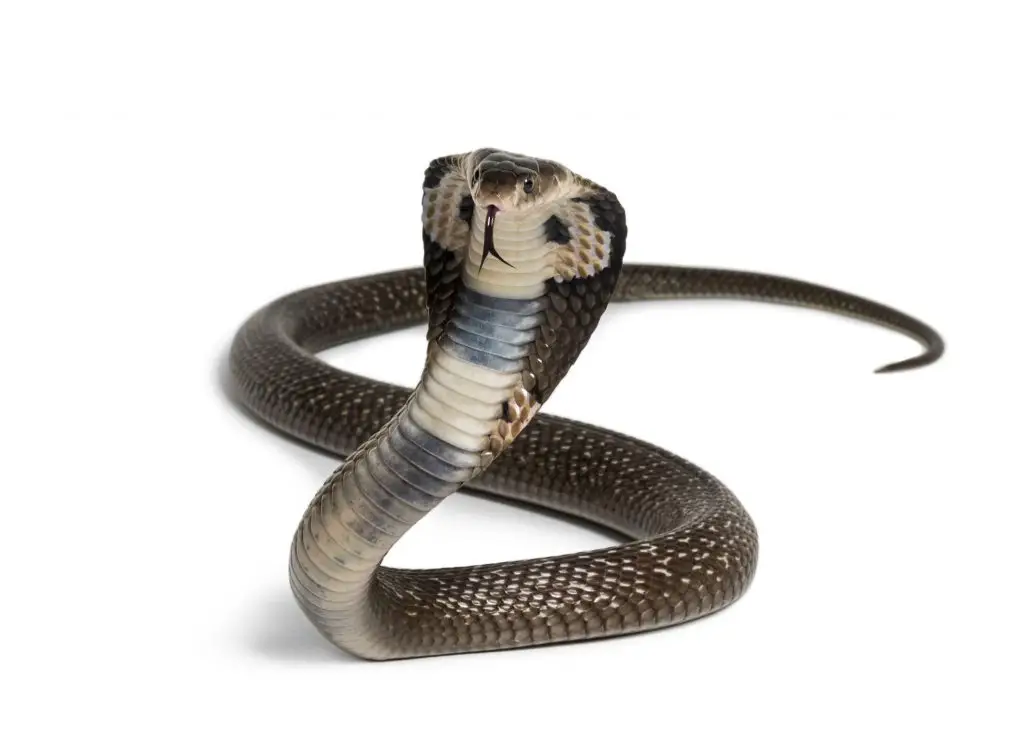
The longest poisonous snake in the world, the king cobra, may be found in northern Indonesia, Hong Kong, India, China, the Malay Peninsula, and the Philippines.
They have two long fangs that may grow up to 0.5 inches long (8-10 mm). The top jaw of king cobras is filled with long, hollow fangs.
They employ their poison to catch their victim, which is why king cobras are so dangerous. The snake is able to eat the victim’s whole body since the venom has rendered them motionless.
By injecting damaging venom into their circulatory systems, the snakes were able to kill or slow down the enormous prey since they were unable to capture and hold it for a lengthy amount of time.
Eastern Diamond Rattlesnake
| Scientific Name | Crotalus adamanteus |
| Type of Animal | Reptile |
| Diet | Carnivore |
| Fang Size | 1 inch |
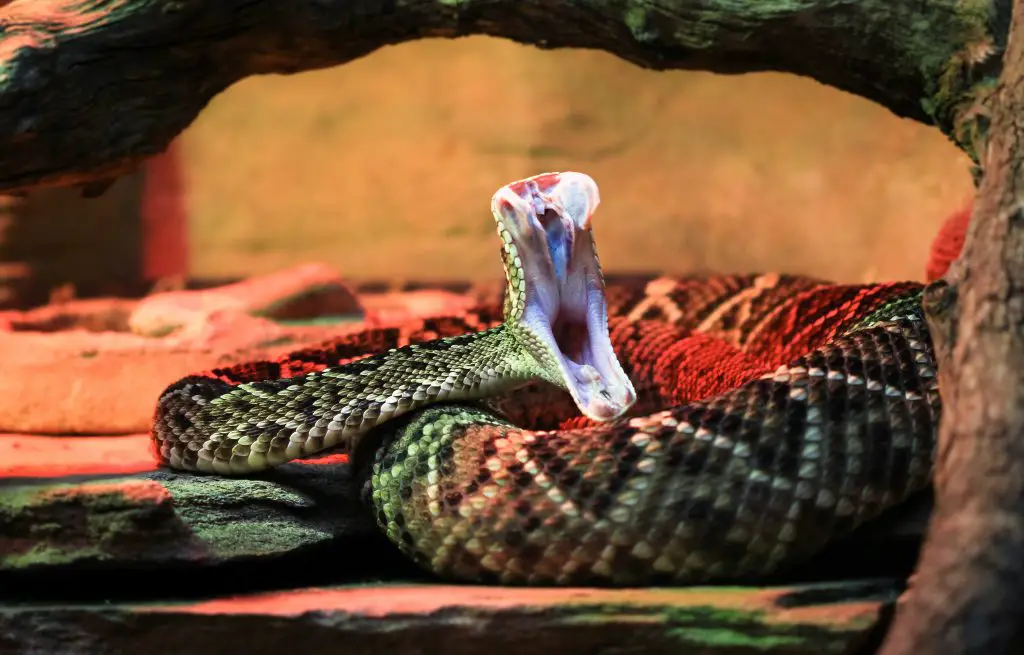
The eastern diamondback rattlesnake is a poisonous snake that may be found in Florida, North Carolina, Louisiana, Alabama, and the Southeast USA.
The world’s largest rattlesnake is the eastern diamondback rattlesnake.
This deadly snake has powerful teeth. The venom glands in its body are connected to the hollow, curved fangs on its teeth. Poison is injected into their victims via their teeth.
These impressive predators have the ability to retract their teeth such that they are parallel to the roof of their jaws. It can inject venom into small creatures, including birds, rats, mice, rabbits, and squirrels, with its inch-long (25 mm) fangs.
Gaboon Viper
| Scientific Name | Bitis gabonica |
| Type of Animal | Reptile |
| Diet | Carnivore |
| Fang Size | 2 inches |
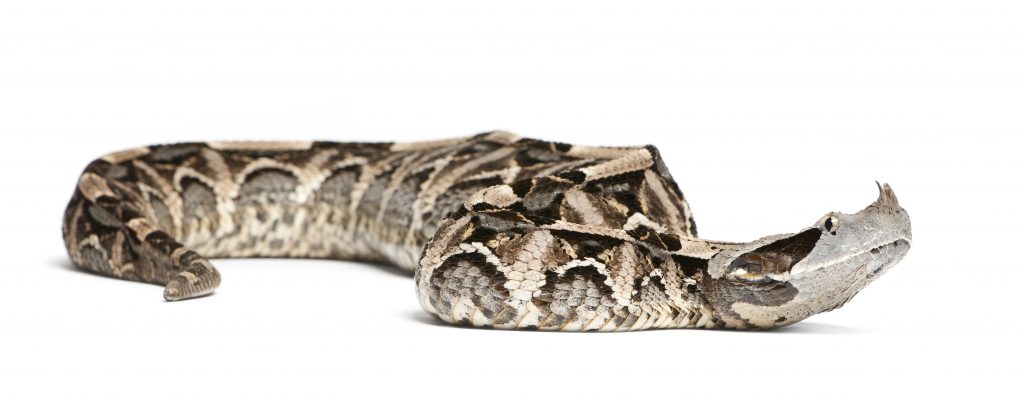
Gaboon vipers are a kind of viper snake that may be found in Central and Western Africa.
It’s the second snake, after the king cobra snakes that can produce the most venom. It possesses the largest fangs of any poisonous snake, reaching up to 2 inches (5 cm) in length, and its deadly bites may kill its victim.
Due to its huge fangs, it may be able to manufacture more venom. Mammals, birds, and a vast range of rodents are all on their menu.
In addition to mice, hares, and rabbits, they also feed on a variety of other small rodents. Its venom-filled bite is very dangerous to humans.
Black Mamba
| Scientific Name | Dendroaspis polylepis |
| Type of Animal | Reptile |
| Diet | Carnivore |
| Fang Size | 0.26 inches |
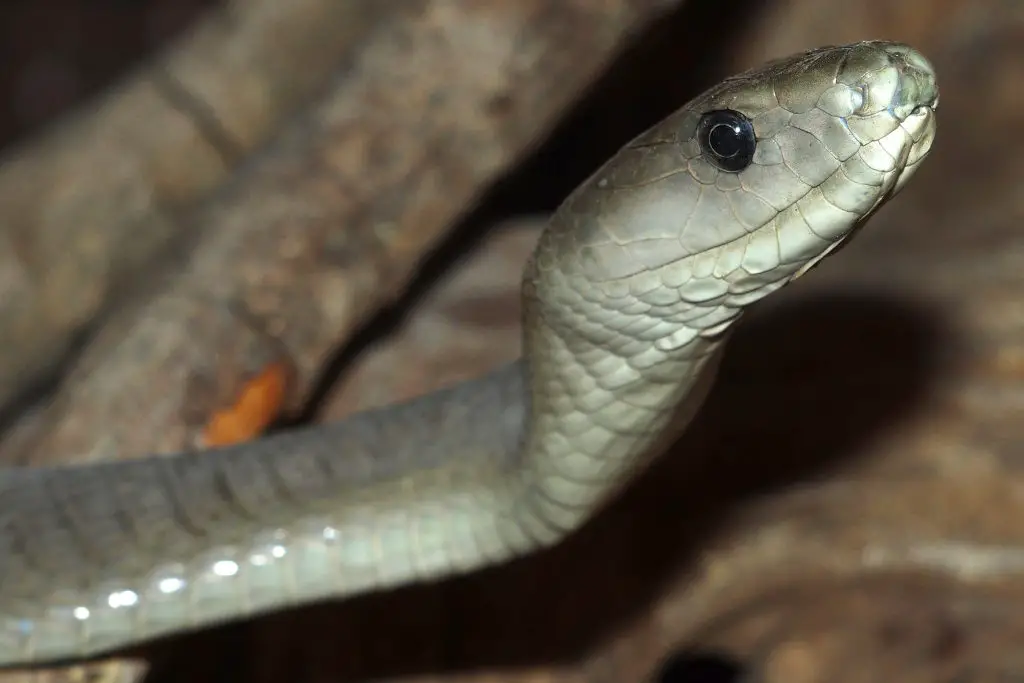
The second-longest snake after the king cobra, the black mamba may be found in the savannas of eastern and southern Africa, among other areas.
Long, hollow, and razor-sharp teeth are the characteristics of this monster.
When they are newborns, they contain just a few venom droplets in each of their lengthy fangs, but as they get older, that number rises to roughly ten. Elephants, lions, and tigers may die from its venom, which is quite potent.
Red Spitting Cobra
| Scientific Name | Naja pallida |
| Type of Animal | Reptile |
| Diet | Carnivore |
| Fang Size | 0.26 inches |
One of the spitting cobra species found in Somalia, Tanzania, Egypt, Sudan, and East Africa is the red spitting cobra.
They’re known for spraying poison via the pores in their teeth, and the venom may go up to 6.5 feet (2 meters).
Adaptation and protection are the driving forces behind this venom-spitting behavior. In addition to spewing forth venom, it possesses huge fangs that measure roughly 5 mm in length.
In the event that toads and frogs are readily accessible, they are the preferred choice. There is a good chance that they may eat small animals such as mice and birds, in addition to other snakes.
Vampire Bat (Fake Fangs)
| Scientific Name | Desmodontinae |
| Type of Animal | Mammal |
| Diet | Carnivore |
| Fang Size | 0.5 inches |
Vampire bats are blood-sucking bats that may be found in South America, Mexico, Central America, and other parts of the world.
These bats are carnivorous bloodsuckers that prey on animals such as birds, horses, cows, and pigs. Because of their anticoagulant saliva and razor-sharp teeth (which some mistake for fangs), they have been reported to exclusively consume blood.
Their blood-eating saliva has anticoagulant properties that prevent pain and blood clots, so they can’t see or hear them while they’re devouring them.
If you wanna know if Vampire Bats also drink human blood then check out our article here.
Pyara Fish
| Scientific Name | Hydrolycus scomberoides |
| Type of Animal | Fish |
| Diet | Carnivore |
| Fang Size | 5-6 inches |
Predatory payaras, sometimes known as vampire fish, are found in the Amazon Basin, as well as in other regions of the globe.
They are able to search and eat fish of comparable size because of the large fang-like fangs in their lower jaws. As a result of their large fangs and vicious bite, they are much more dangerous and cruel hunters than piranhas.
Because of their large fangs, they’ve been dubbed “vampire fish,” “wolf fish,” “Dracula fish,” and “saber-toothed tiger fish.”
Gray Wolf
| Scientific Name | Canis lupus |
| Type of Animal | Mammal |
| Diet | Carnivore |
| Fang Size | 1-2.5 inches |
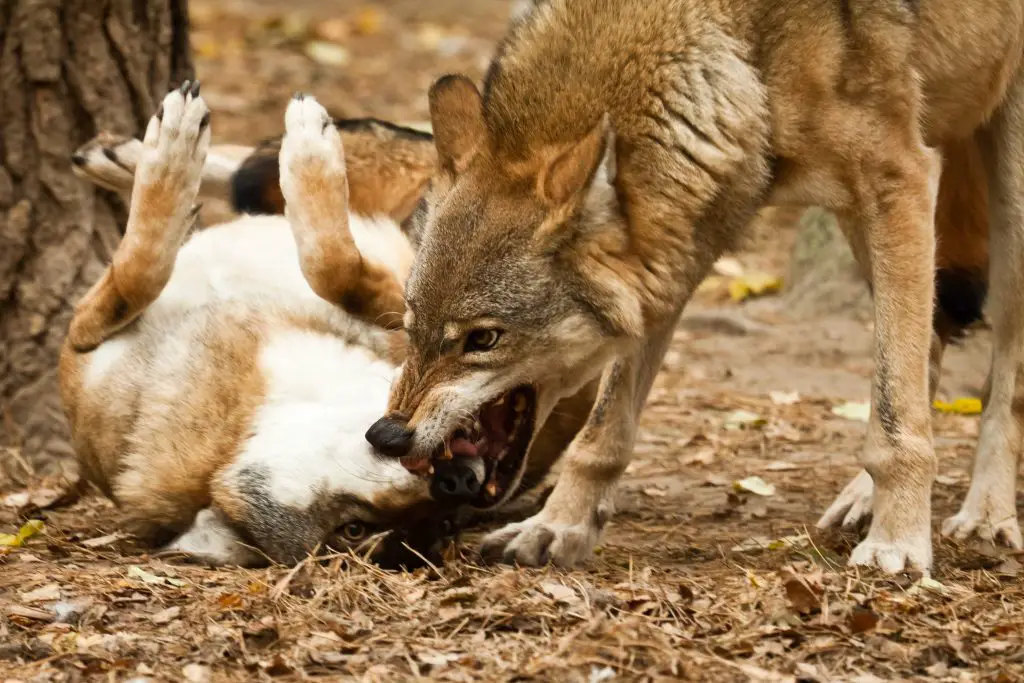
The grey wolf is a big species of wolf that may be found in Michigan, Alaska, Idaho, Wyoming, and Montana. It is also called timber wolf.
They have 42 teeth, two of which are long, curved, and sharp, measuring around 1-2.5 inches in length.
There are longer canines on the upper jaw compared to those on the lower jaw.
These canine teeth or fangs may pierce the flesh of the victim and provide enough hold to prevent it from fleeing.
The delicate bones and cartilage surrounding the victim’s neck are especially vulnerable to its large fangs’ penetrating power.
Grey wolves eat a variety of animals, including deer, moose, beavers, and even baby foxes.
Siberian Musk Deer
| Scientific Name | Moschus moschiferus |
| Type of Animal | Mammal |
| Diet | Herbivore |
| Fang Size | 4 inches |
A Siberian musk deer is a musk deer species found in the Taiga, the Himalayas, Asia, Mongolia, Manchuria, and other parts of the world.
They lack horns, unlike most other deer, but make up for it with their long teeth. Long canine teeth resembling fangs may be seen in their mouths.
Siberian musks fight using their fangs during the mating season. In order to mark and protect their area, they use their teeth. An interesting quirk is the fangs’ vegetarian diet.
Clouded Leopard
| Scientific Name | Neofelis nebulosi |
| Type of Animal | Mammal |
| Diet | Carnivore |
| Fang Size | 2 inches |
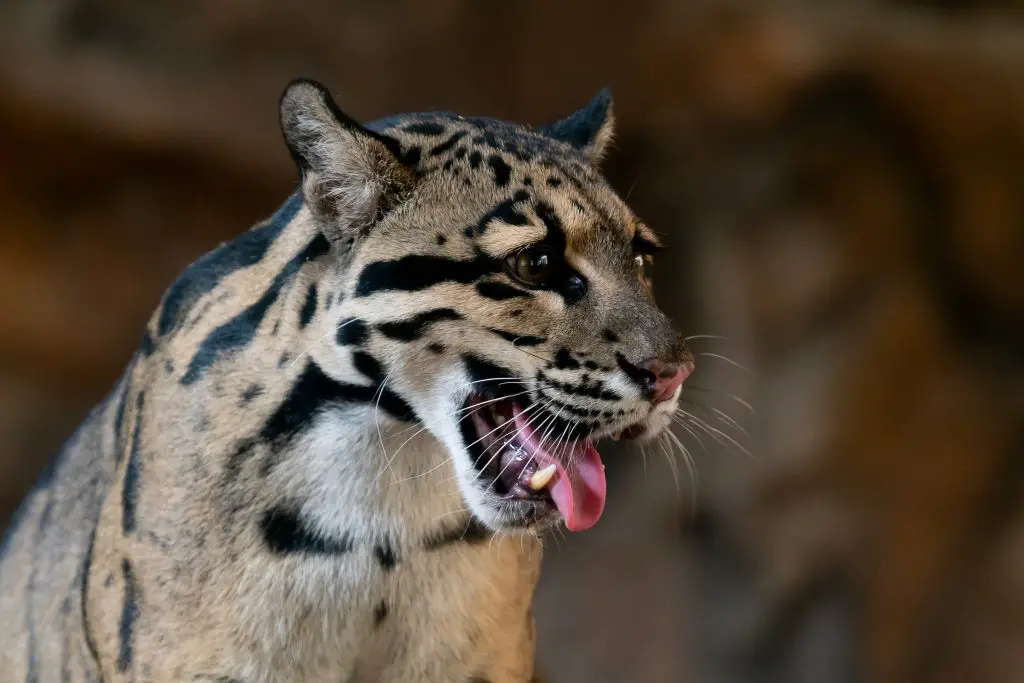
The clouded leopard may be found in Taiwan, Sumatra, Assam, Borneo, Nepal, and Bangladesh.
The canine teeth of the clouded leopard are the longest among cat species in relation to their body size.
Prey like gibbons, slow loris, small deer, and wild boars may easily be punctured by their 2 inch (4 cm) long fangs or canine teeth.
For hunting, these cats use their poisonous teeth to pierce the prey’s flesh and then hold it in place with their jaws. Their long fangs, on the other hand, are used to scare away potential intruders and protect their territory.
Vampire Water Deer
| Scientific Name | Hydropotus inermis |
| Type of Animal | Mammal |
| Diet | Herbivore |
| Fang Size | 1-1.5 inches |
A water deer, also known as a Chinese water deer or a Korean water deer, is a species of deer that may be found in both Korea and China.
These “fanged” or “vampire” deer have long, sharp canine teeth that originate from the upper jaws.
The fangs are important because they are more visible during the breeding season when males have a better chance of meeting and defending females as well as their territory.
Inland Taipan
| Scientific Name | Oxyuranus microlepidotus |
| Type of Animal | Reptile |
| Diet | Carnivore |
| Fang Size | 0.25 inches |
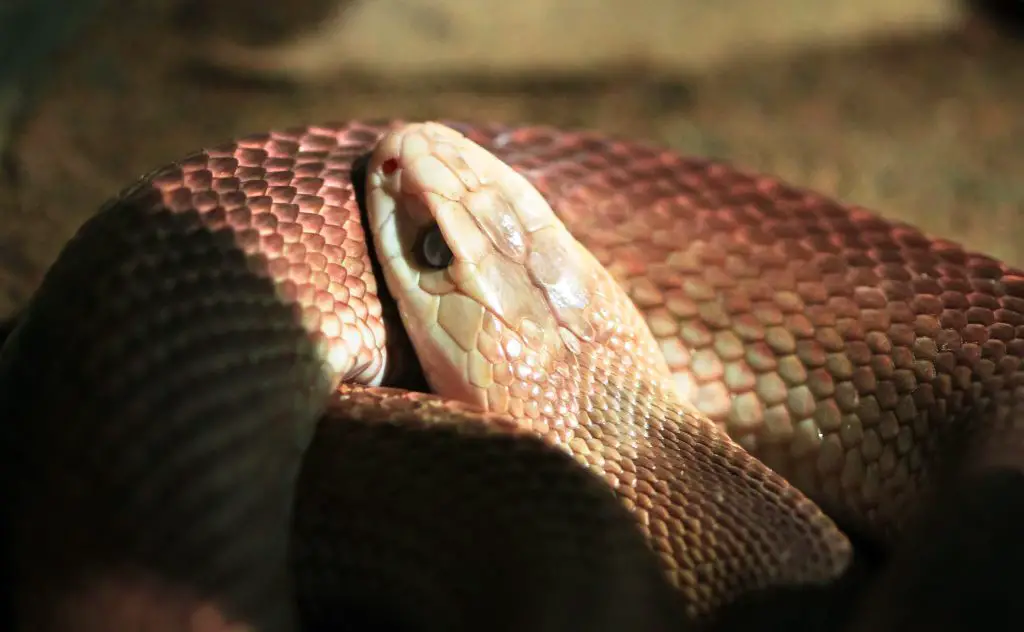
Inland taipans, sometimes known as western taipans, are poisonous snakes found in South Australia, Queensland, and other parts of Australia.
These snakes have venom glands linked to their two long fangs, which may produce enough venom to kill 100 people or 25,000 mice, depending on the length of the fangs.
One of the fangs of an inland Taipan can easily penetrate the skin and inject venom into the bloodstream, which can be fatal even if you survive the bite. Even if you make it 45 minutes after the bite, you could still die.
Gorilla
| Scientific Name | Gorilla gorilla |
| Type of Animal | Mammal |
| Diet | Herbivore |
| Fang Size | 2 inches |
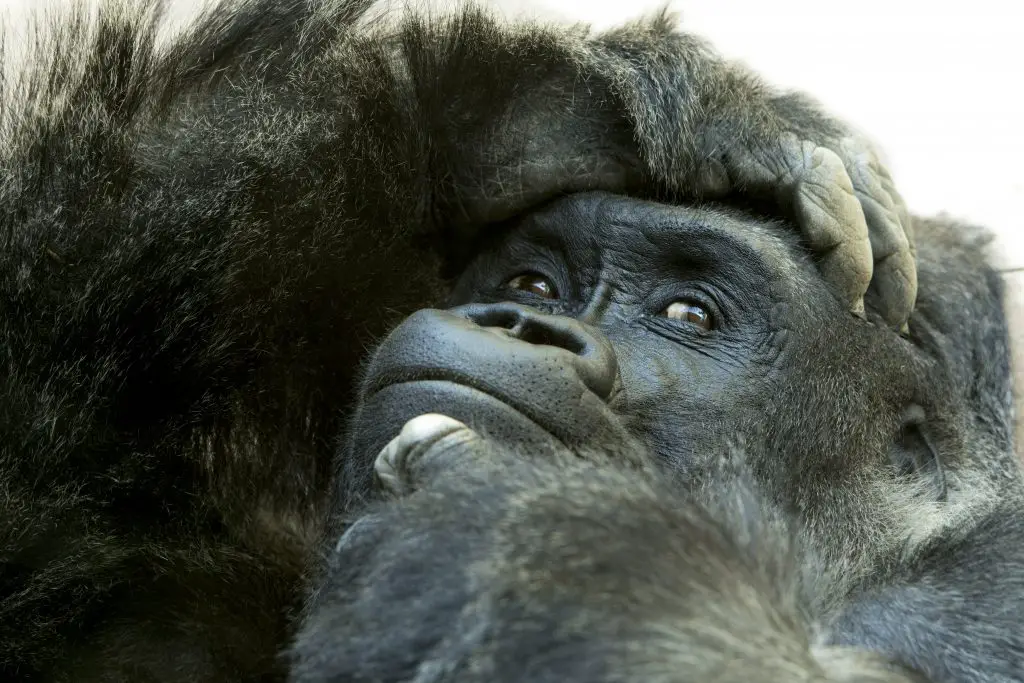
Gorillas are the largest herbivorous primates and live in the tropical forests of Africa.
When it comes to their “fangs,” or “canine teeth,” males have a longer set than women. Gorillas with longer teeth predominate.
In other words, females find them more attractive during the breeding season.
They fight to the death when two groups of silverback gorillas encounter.
In addition to their powerful and bulky physique, gorillas would use their long fangs to inflict devastating harm on their opponents.
Unlike other primates, they seldom attempt to climb trees.
Goliath Birdeater Spider
| Scientific Name | Theraphosa blondi |
| Type of Animal | Spider |
| Diet | Carnivore |
| Fang Size | 2 inches |
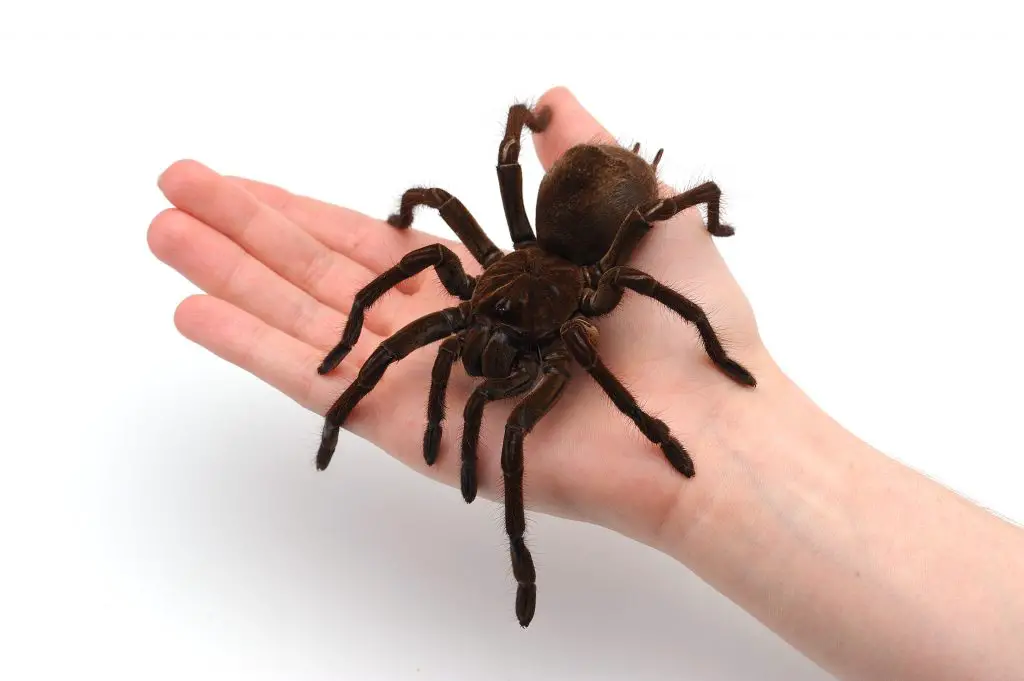
One of the largest and heaviest tarantula species in the world, the Goliath Birdeater, may be found throughout South America.
They also have the longest fangs compared to other species.
Teeth and venomous glands go hand in hand. This spider kills its prey by injecting it with poison, which takes effect almost immediately. It has a toxin that may penetrate human skin.
Larger creatures, like humans, are not affected by the goliath’s poison. They’d feel as though a wasp had stung them.
Opossums
| Scientific Name | Didelphidae |
| Type of Animal | Mammal |
| Diet | Omnivore |
| Fang Size | 0.3 inches |
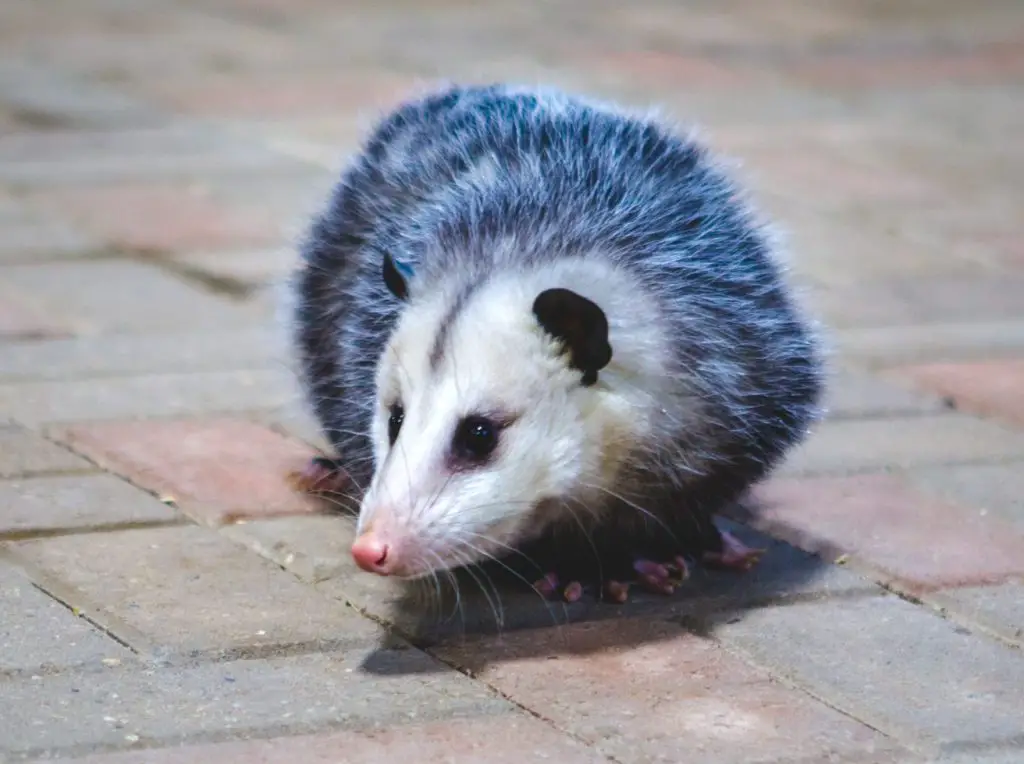
Opossums are mammals that are only found in North America.
They are omnivores that can consume a broad variety of things at any one time. Although they are attracted to carrion, they are frequently sighted looking for food in garbage cans and dumpsters.
More teeth are found on these marsupials than on any other land mammal in the US. There are 50 teeth in all, including two sets of fangs, in the opossum’s mouth.
In order to scare away potential predators, these creatures use their teeth to tear the flesh off their prey. Opossums will pretend to be dead until the danger has passed if their predators are too large to be frightened.
Bears
| Scientific Name | Ursidae |
| Type of Animal | Mammal |
| Diet | Omnivore & Carnivore |
| Fang Size | 1.5-3 inches |
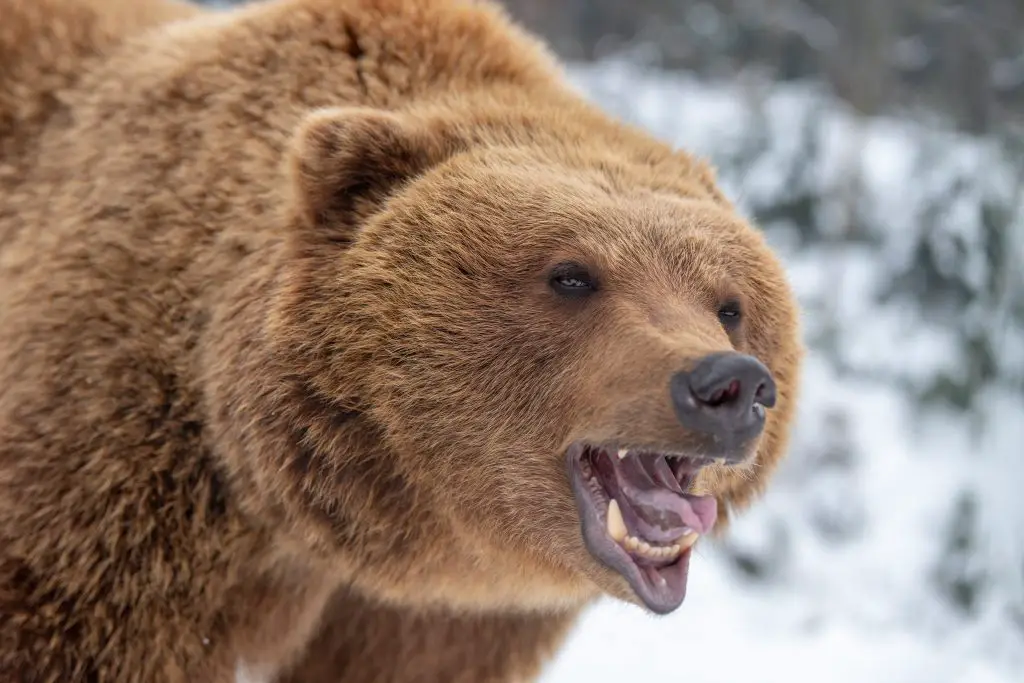
Bears are the last member of my list of animals with fangs. There are now eight bear species that may be found in Europe, South America, and Asia. They are also called doglike carnivores (Caniforms).
It is common knowledge that most animals are omnivores, eating both meat and vegetables.
Counting the incisors and canines (four in each mouth), they have a total of 42 teeth.
While huge cats and other canines display their teeth to protect themselves, bears don’t do so. Their fangs are mostly employed to penetrate the skin of their victim while they are on the move.
According to the species, a bear’s fangs vary in length. There is one exception to this: an adult bear’s fangs may measure up to three inches in length on average.
What are Some Animals with Big Horns that People Might Not Be Aware of?
The world is home to a variety of animals with biggest horns that often go unnoticed. One such creature is the Arabian oryx, showcasing long, slender horns that can reach up to 35 inches. Another remarkable species is the addax, a desert-adapted antelope possessing impressive spiraled horns. The markhor, a wild goat native to Central Asia, also boasts majestic, corkscrew-shaped horns that can extend up to 63 inches. It’s fascinating to discover these lesser-known animals with significant horns.
Conclusion: Animals with Fangs
Some of the fanged species mentioned above may be found in the wild.
The sharp teeth of the majority of these species are used either for hunting or for self-defense and the protection of their habitat.
Herbivores use their fangs to show their strength in mating rituals, and they usually use them to protect themselves.

